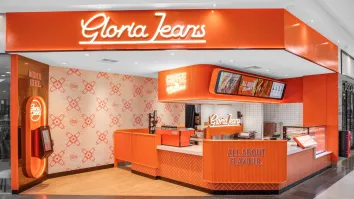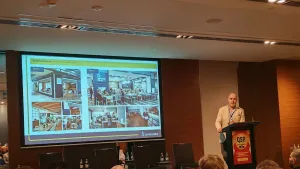
The one mistake Gami Chicken caught in its menu pricing
Implementing a new strategy resulted in a 254% sales growth between April and September.
Correctly communicating value could be the determining factor as to whether or not a customer will walk through the door or pass it.
This was something Gami Chicken realised when consumers often mistake their $50 chicken plate prices for an individual meal which often leads to consumers eating somewhere else.
In QSR Media's last interview with June Lee, Gami Chicken’s Co-Founder and Executive Director, in 2017, the brand had 12 restaurants across Melbourne. Specialising in Korean-style chicken, Gami began in 2006 in Carnegie and now has 38 restaurants. Gami Chicken is best known for its fried chicken and beer.
“Creating value for customers and franchisees is always a challenge, but one that has amplified since Covid-19 and more recently, the cost of living increases. The “shareability” of Gami Chicken’s meals, whilst preserving the Korean value of ‘sharing’ meals and adding value to group dining, was often misunderstood by some who saw shared plates of chicken for $50 as prices for an individual dish and quickly moved on,” Jun Lee, Gami Chicken’s Co-Founder and Executive Director said.
MORE LIKE THIS: Everything you need to know about Gong cha's new microstore format
With the cost of living so high, miscommunication like this could potentially hurt a business. So to improve value communication, Jun said they enhanced their signature menu share dishes by introducing quality gourmet food whilst identifying alternative menu items other than sharing dishes to improve the brand’s value proposition.
Gami Chicken relayed this in its updated menu where solo meals and sharing meals are highlighted with big bold words to separate them from each other with prices between $10 to $22. This was step one of Gami Chicken’s strategy as it targets $50m in brand revenue before the end of 2023.
“Delivering increased value without raising the price can sometimes seem like a mission impossible, particularly when we measure value solely in monetary terms. A clear example of this is "shrinkflation," where a product or its packaging is reduced in size, but the price remains unchanged. However, value perception varies widely based on a consumer's situation, needs, and financial capacity. Consequently, our starting point has been to closely study our customers and re-assess their needs. Based on the new findings and consumer personas, we redefined our offerings and value for customers, thus, introduced new individual menus, with a low-entry point of $10,” Jun explained.
After looking closely at how they communicate value, Gami Chicken also started to look into how it can offer a more optimised menu. Jun said they wanted to understand how customers perceive value from their dining experience, taking into account the various value propositions they present, including pricing.
“This deep dive revealed a significant shift in Gami's core customer preferences. We identified a new menu segmentation that highlighted a rising demand for individual Korean cuisine meal options. This change is particularly notable since traditionally, Gami's patrons showed a strong preference for our shared dining menus,” Jun explained.
“Individual menu items such as Bibimbap and Gochujang Chicken offer healthier choices whilst catering to those seeking a traditional Korean dish, and lighter chicken and burger options are resonating with customers at the sub-$16 price point– so far sales of individual menu items have increased 52% since April.”
ALSO READ: 62% of Australian consumers desire more discounts as cost crunch bites: study
This resulted in Gami Chicken’s lunch turnover increasing by 18% since the casual dining outfit began focusing on individual menu items and healthier, traditional Korean dishes.
“We’ve also restructured our operations and production at every level of our business. For instance, within our Research & Development, I have innovated our recipes and ingredients to pioneer new cooking methods allowing to produce higher-quality products at lower costs. This approach enables us to tackle current market challenges, such as inflation,” Jun said
Dealing with inflation challenges
For Jun, both inflation and the rising cost of living present significant hurdles for the restaurant industry. He explained that inflation impacts the cost of goods sold, which is fundamental to any restaurant's operations. Meanwhile, the increased cost of living influences consumer behaviour and spending, factors that restaurant businesses heavily rely upon.
“However, despite the discomfort these challenges bring, it's essential to acknowledge that they also offer remarkable opportunities for re-evaluating your brand and business. Inflation forces you to prioritize what truly matters to your business. Is a particular ingredient crucial to maintaining our menu's identity? Can it be substituted? Ultimately, it prompts you to reconsider your brand's significance to your customers. The increase in the cost of living prompts a reassessment of your customers' needs and how you can adapt to changes in their behaviour and spending habits. This process, in turn, deepens your understanding of your customers, which lies at the heart of the restaurant business,” Jun said.
MORE LIKE THIS: Restaurants need to adjust as workplace flexibility changes consumption patterns
Inflation challenges are just the tip of the iceberg. Jun said the restaurant industry has witnessed profound shifts in consumer consumption patterns as a result of the pandemic, influenced by factors such as heightened individualism, inflation, and increasing interest rates.
“The surge in takeaway and food delivery services mirrors a trend towards more solitary or small group dining experiences at home. Additionally, the growing popularity of cost-effective individual menu items is indicative of the economic pressures from inflation and rising interest rates. We can also observe generational shifts in behaviour, with a trend towards healthier menu choices coupled with a reduced frequency of eating out,” Jun said.


























